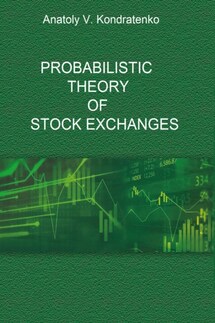Probabilistic Economic Theory - страница 30
In other words, the law of demand means the reflection of real market processes connected with continuous changes of S&D in the market over time. The traditional demand function is an attempt to describe a situation in the market where nothing changes. It is not a dispute about how correct or incorrect a traditional agent’s demand function is. Instead, we can say that there is no basis on which to consider this model, reasonably, logically, or empirically. In principle, it is impossible to deduce a traditional agent’s demand function from the data concerning the whole market. And there is no convincing empirical data, testifying that a buyer’s behavior in the market is reflected by such a downward-sloping demand curve in the interval of all possible prices from zero to infinity. To understand our logic, the reader can try to draw on paper a demand curve of a buyer who wants to buy a new Mercedes car at a price of 100 000 $/car, or to buy shares at the stock-exchange for 100 000 $. We are sure that he or she will meet obstacles and recognize that there is something wrong with the traditional model. Moreover, logically it is impossible to construct a traditional function of the whole market making use of empirical data for the same reasons as that for functions of an individual agent. We will concern ourselves with this question once again in the end of Chapter.
Second, our main objection against the traditional demand function is that when real buyers enter a real market, they “keep in mind” not a concrete demand function on a whole interval of prices from zero to infinity, but a concrete desire to buy a certain quantity of demanded goods at a price acceptable for them which is near a known “yesterday’s” price. This is illustrated by an example of an ordinary buyer in a consumer market, who needs a certain amount of sugar in a week – but no more and no less. It is also true for a business company in a wholesale market: it should buy exactly as many raw materials and goods as are necessary for production, without creating superfluous stocks and with delivery “just in time”. Therefore, the demand function of an individual buyer can be distinct from zero only in a small interval of prices, near a known “yesterday’s” market price. In order to obtain market functions it is necessary to summarize these rather narrow functions, instead of traditional functions, distinct from zero in the whole interval of prices from zero to infinity. Moreover, the fact that in the traditional model practically all authors have the demand function converging to a maximum near the zero price (some authors even have it diverging to infinity), seems, in our opinion, to be an artificial property of a person – to take the maximum “for free”. In a real market buyers do not behave like that, and in practice no life is observed in the markets near zero prices. It is a dead zone; there is neither supply nor demand there.
Если вам понравилась книга, поддержите автора, купив полную версию по ссылке ниже.
Продолжить чтение






